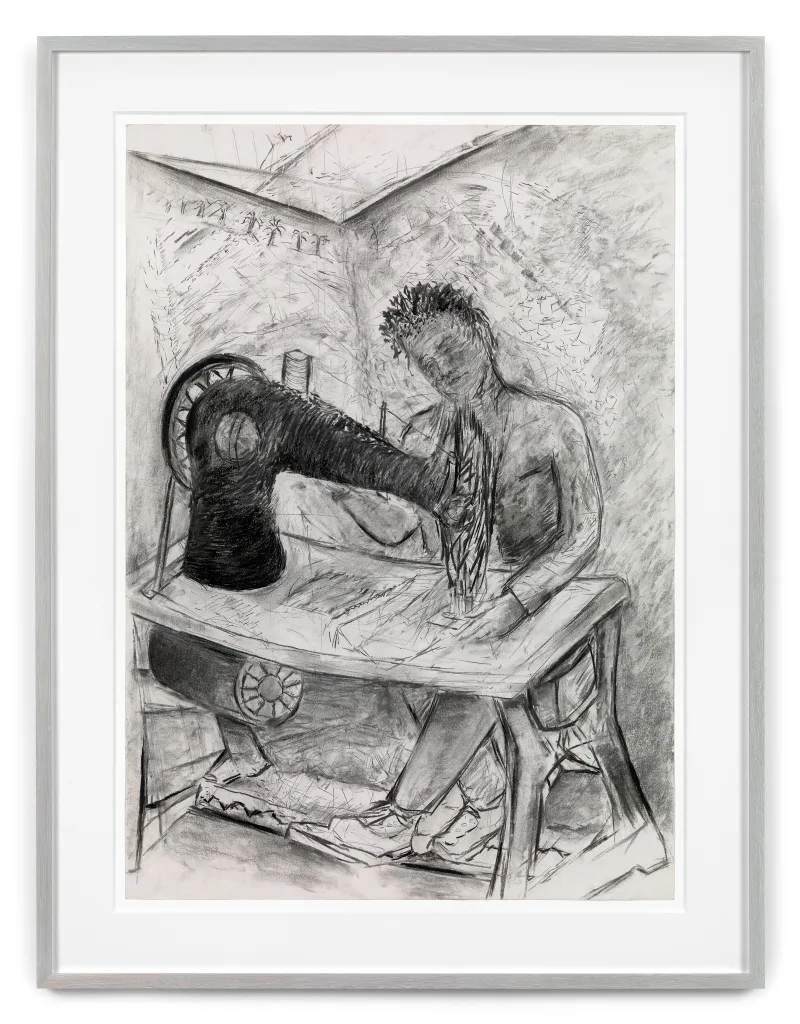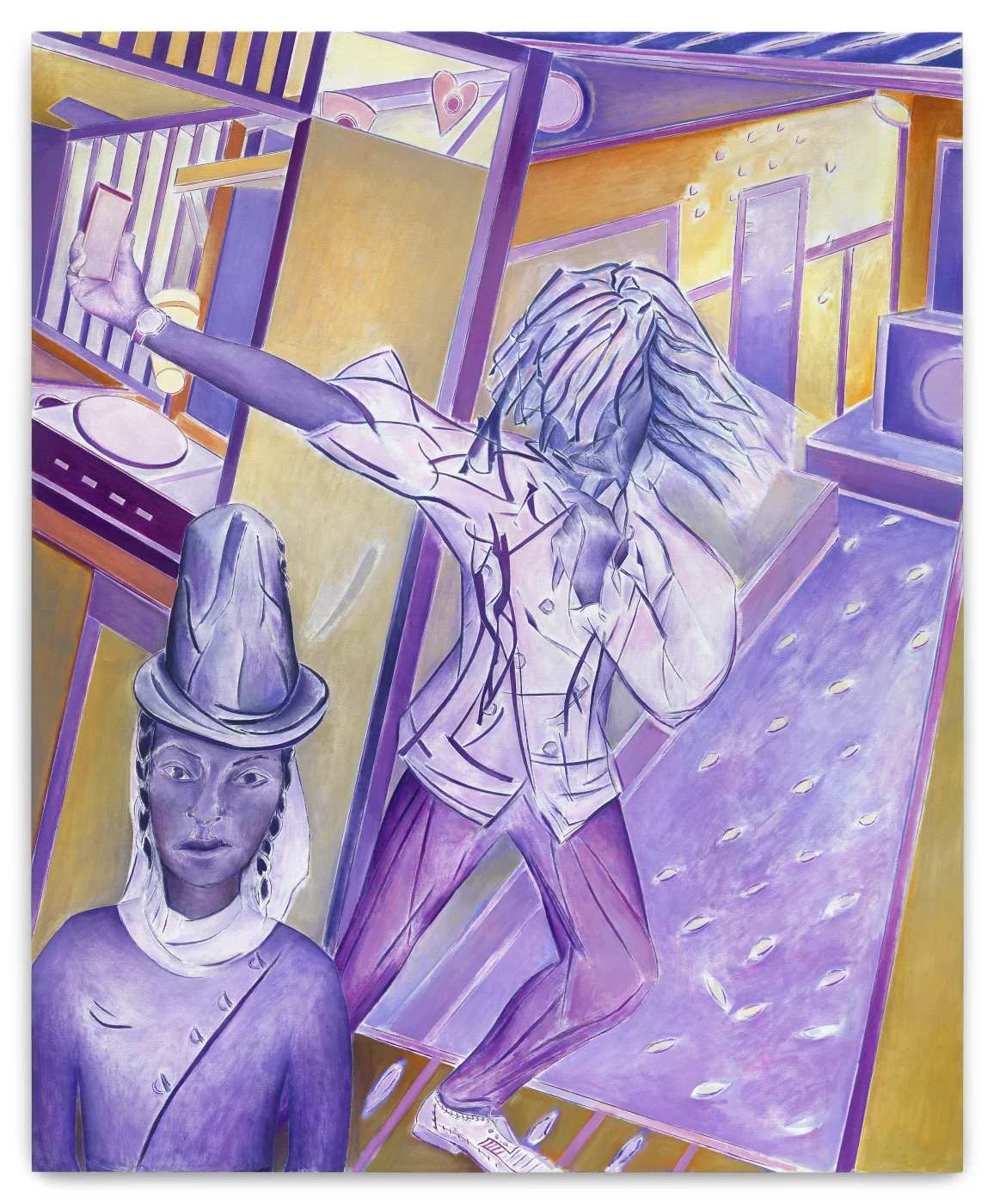
Denzil Forrester: Two Islands, One World
Overview
Stephen Friedman Gallery and Andrew Kreps Gallery present 'Two Islands, One World', a two-venue exhibition by Grenada-born, British artist Denzil Forrester. Curated by Sheena Wagstaff, Chair Emerita at The Metropolitan Museum of Art, and former Chief Curator of Tate Modern, the show brings together new and historical works spanning five decades of his career.
This presentation follows institutional exhibitions in 2023 at the Kemper Museum of Contemporary Art, Kansas City and ICA Miami.
The dual exhibition showcases Forrester’s depictions of London’s reggae and dub nightclub scene during the 1980s. Each space also highlights other significant bodies of work: Andrew Kreps Gallery focuses on memories from the artist’s childhood and adolescence, while Stephen Friedman Gallery presents three significant historical paintings depicting police brutality and the untimely death of his friend Winston Rose.
Forrester was born in Grenada in 1956 and moved to London in 1967. At this time, immigrants from the West Indies had arrived in the UK seeking opportunities and the promise of a new life. Against a backdrop of racial oppression and resistance, his formative years as an artist unfolded. Forrester’s recent work reflects his memories of leaving Grenada and, on arriving in London, sewing shopping bags in their basement with his mother, to sell to support the family.
By the 1980s, Forrester, now a young adult, was frequenting London’s dub and reggae clubs. Immersed in the clubs’ vibrant energy, he would sketch the ecstatic dancers from behind the bar. In his North London studio the next morning, Forrester would transform these intimate drawings into paintings, using vibrant colors to mimic the pulsing lights that flooded the clubs.
Stephen Friedman Gallery and Andrew Kreps Gallery present Two Islands, One World, a two-venue exhibition by Grenada-born, British artist Denzil Forrester. Curated by Sheena Wagstaff, Chair Emerita at The Metropolitan Museum of Art, and former Chief Curator of Tate Modern, the show brings together new and historical works spanning five decades of his career. This presentation follows institutional exhibitions in 2023 at the Kemper Museum of Contemporary Art, Kansas City and ICA Miami.
The dual exhibition showcases Forrester’s depictions of London’s reggae and dub nightclub scene during the 1980s. Each space also highlights other significant bodies of work: Andrew Kreps Gallery focuses on memories from the artist’s childhood and adolescence, while Stephen Friedman Gallery presents three significant historical paintings depicting police brutality and the untimely death of his friend Winston Rose.
Forrester was born in Grenada in 1956 and moved to London in 1967. At this time, immigrants from the West Indies had arrived in the UK seeking opportunities and the promise of a new life. Against a backdrop of racial oppression and resistance, his formative years as an artist unfolded. Forrester’s recent work reflects his memories of leaving Grenada and, on arriving in London, sewing shopping bags in their basement with his mother, to sell to support the family.
By the 1980s, Forrester, now a young adult, was frequenting London’s dub and reggae clubs. Immersed in the clubs’ vibrant energy, he would sketch the ecstatic dancers from behind the bar. In his North London studio the next morning, Forrester would transform these intimate drawings into paintings, using vibrant colors to mimic the pulsing lights that flooded the clubs. In early works like The Cave (1978), he constructs a dynamic, Cubist-like composition where geometric forms convey rhythmic movement. As Wagstaff describes, “To experience the vibrant sights and sounds lived by Forrester in his time is to celebrate his remarkable artistic skill, acute powers of observation, rich compositional rhythm – and courage."
Forrester’s practice also extends beyond the dancefloor to confront the racial and social injustices of the time. The artist exposes police brutality in several early works investigating the tragic death of Winston Rose, a close friend and neighbor. These works are presented in one room of the show, enabling for a place of reflection. Describing the documentary power of Forrester’s work, Wagstaff writes: “Each of Forrester’s paintings has a profound sense of precision with which they speak to this historical moment. Their poignancy is enhanced through an exhilarating irradiation, fracturing, or evacuation of light, from the revelation of bodies massed and united in rhythm and movement, flashing glimpses of DJ’s and dancers in darkened basements, to the somber scenes of the death of his friend Winston Rose in police custody.”
Throughout the exhibition, images can be seen to repeat over the decades, much like the dub technique in music. Works such as Jungleheart (1995) and DJ Mix (1998) feature the same, distinctive character. Forrester continues to use drawings from the 1980s to inform his practice today, combining figures like London Dub DJ, Jah Shaka, with scenes of Cornish nightlife. Since moving to the coast in 2016, his palette has transformed – saturated with pink and purple hues, inspired by the brilliant light characteristic of Cornwall. Tutti-Frutti (2024) and Jah Guide Shaka (2023), the most recent paintings exhibited, are meditations on memories, reinterpreting decades’ old iconography.
Speaking of Forrester’s new work, artist Peter Doig reflects, “Denzil is one of the most important painters to come out of London in the early 1980s, and his early works remain as relevant and vital today as when they were first made. […] However, a revelation for me has been seeing the recent work coming out of Denzil’s studio. It has a subtlety and form that perhaps comes about because he is reflecting upon his past. These new paintings are dreamlike and emerge as much from his imagination as from his studies of real life.”
Stephen Friedman Gallery and Andrew Kreps Gallery present 'Two Islands, One World', a two-venue exhibition by Grenada-born, British artist Denzil Forrester. Curated by Sheena Wagstaff, Chair Emerita at The Metropolitan Museum of Art, and former Chief Curator of Tate Modern, the show brings together new and historical works spanning five decades of his career.
Installation views, Stephen Friedman Gallery



















"To experience the vibrant sights and sounds lived by Denzil Forrester in his time is to celebrate his remarkable artistic skill, acute powers of observation, rich compositional rhythm – and courage."
Watch
Studio Film

"The beginning of the eighties was a very magical and active time, full of satisfying images for me. These blues clubs are a continuation of city life with some spiritual fulfilment. The words of this music tell of ‘the bad man’ in society i.e. politicians, police, businessman and all their bad policies, but because of the deep hypnotic ancestral beat, dub music makes one feel purified, strong, and free of the complicated network we live in."
Installation views, Andrew Kreps Gallery
































“On a single night, [Forrester] might make as many as a dozen drawings, each done quickly, in the time it took for a record to be played. Four or five minutes tops […] Around dawn Forrester would get home. By noon, he would be in his studio, taking a look at his drawings, sometimes for the first time, while the feeling from the night before hadn’t yet dimmed.”
– Sam Thorne (former Director of Nottingham Contemporary)










"I believe Denzil is one of the most important painters to come out of London in the early '80s and his early works remain as relevant and vital today as when they were first made."

In 1983, Forrester was awarded a two-year scholarship by the British School at Rome in Italy. The works made there, such as Blue Tent (1984) represent a defining moment in the artist's practice. In Italy, Forrester continued to work directly from sketches made back in London of nocturnal revellers dancing to the sets of legendary DJs such as Jah Shaka. Removed from the original experience, he revisited the subject, mixing familiar iconography with new scenes from Rome and memories of the West Indies.
The artist’s sweeping compositions from this period were inspired by aerial configurations of Rome’s circular piazzas, as well as fountains encountered in the gardens of the Villa Borghese adjacent to the British School at Rome. Forrester has also spoken of his fascination with Old Masters such as Caravaggio and the lasting impression of the intensity and drama of the Italian artist's work. The sense of movement, bold arrangement of colour, dynamic use of line and fragmented picture planes within Forrester’s scenes also evoke Italian Futurism.
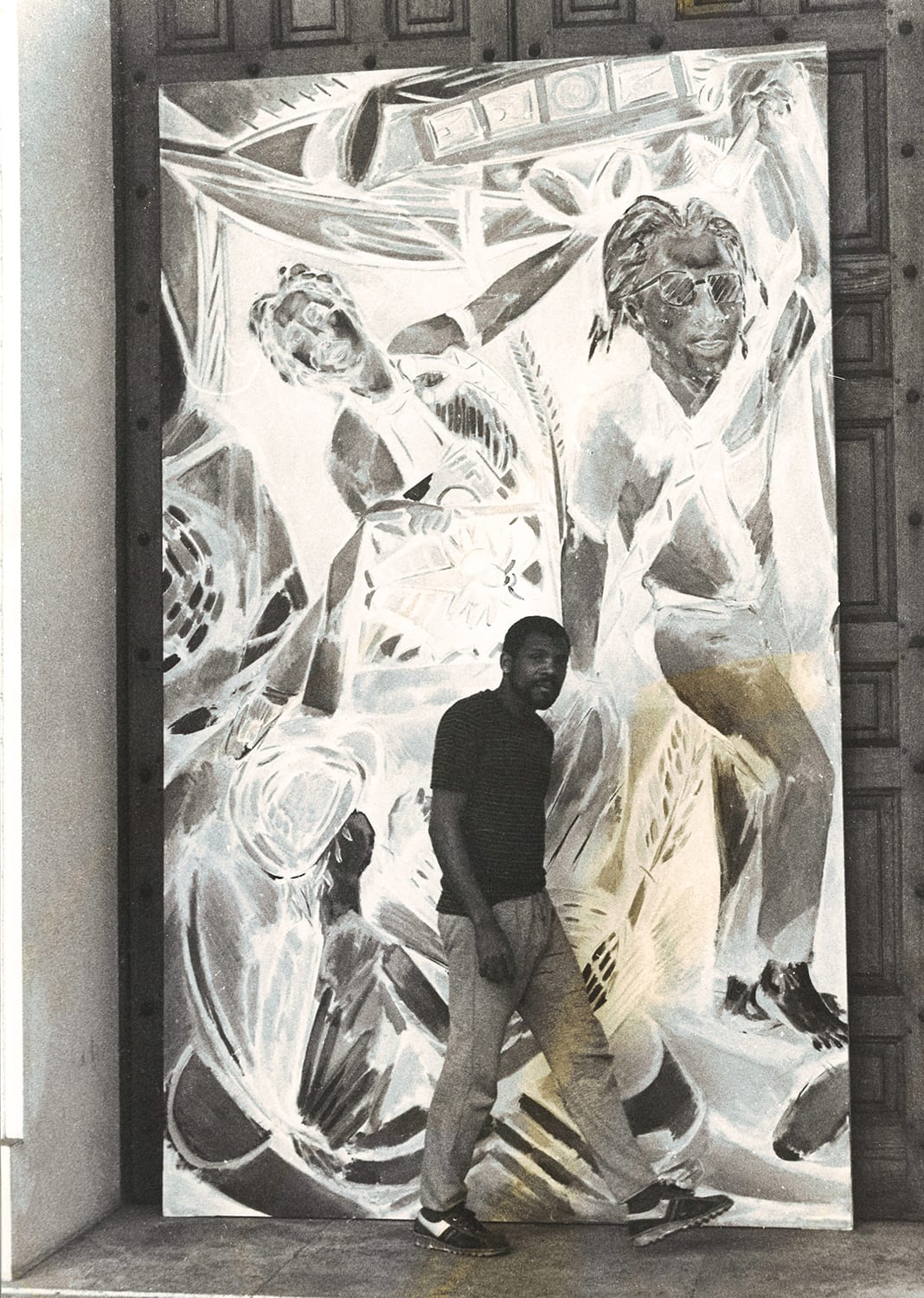
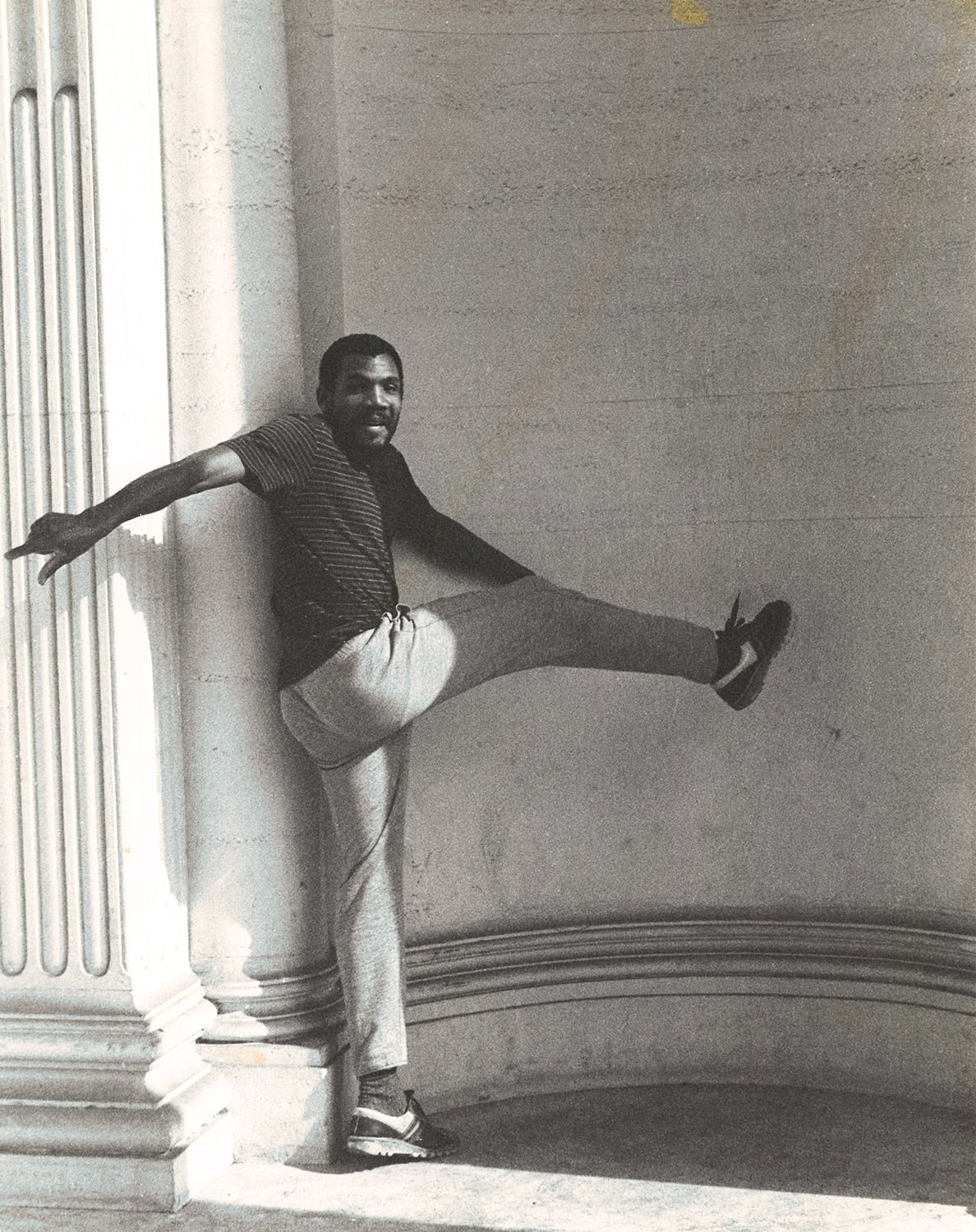
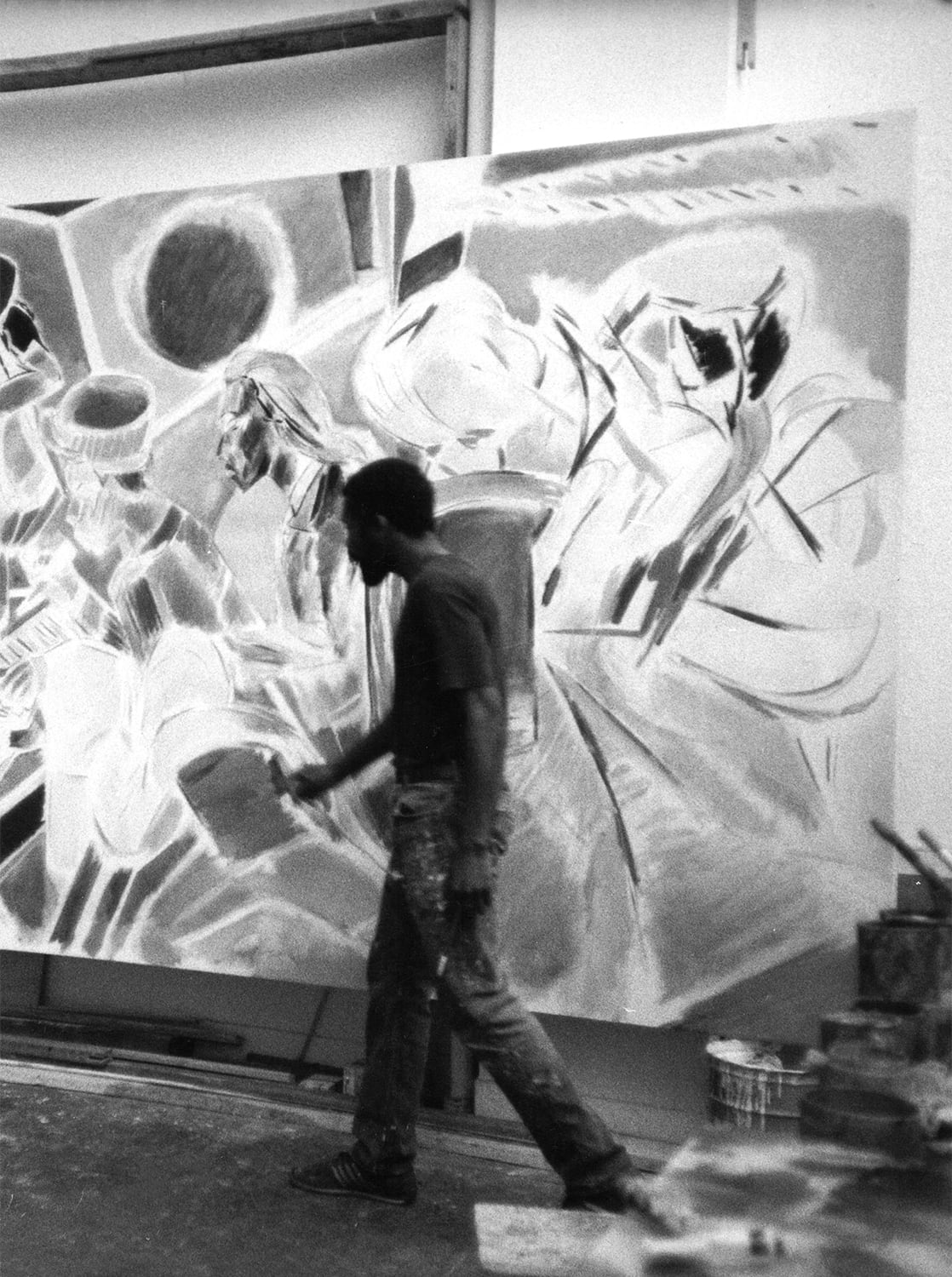

"Beneath the high-spirited jubilance of these early works hums the sombre reality of life for the Windrush generation (migrants who arrived in Britain after 1948 from the Caribbean on the SS Empire Windrush). Forrester’s celebration of the vibrancy of Caribbean culture is inseparable from the struggles of assimilation and institutional racism. Shaken by the brutal death in police custody of his friend Winston Rose in 1981, for some years, the artist focused almost exclusively on ‘police paintings’ that portray a community under the constant threat of violence and persecution."
– Osei Bonsu (Curator of International Art - Africa, Tate Modern, London)

Forrester went to New York between 1986–1988 for a two-year residency after being awarded a Harkness Fellowship. Sam Thorne (former Director of Nottingham Contemporary) explains that after his residency with the British School at Rome (1983–1985), "New York felt dirty and noisy [in comparison], almost monochromatic, with graffiti providing the only colour." As a result, all of the paintings that Forrester made whilst in New York solely consist of hues of melancholy blue.
One such painting, Blue Jay (1987) is inspired by the death of Forrester’s friend Winston Rose, who died in a police van in 1981 having been forcibly detained under the Mental Health Act. Monumental in scale, this is arguably one of Forrester's most significant works. Thorne explains that "[Rose]’s figure is seen from behind, held limb by limb, crucifix-like by four police officers, their shiny-tipped helmets looking more like hoods." Here, the policemen’s anonymity allows them to become symbols of the police brutality that proliferated London during the 1980s.



"Each of Forrester’s paintings have a profound sense of precision with which they speak to this historical moment. Their poignancy is enhanced through an exhilarating irradiation, fracturing, or evacuation of light, from the revelation of bodies massed and united in rhythm and movement, flashing glimpses of DJs and dancers in darkened basements, to the somber scenes of the death of his friend Winston Rose in police custody."
- Sheena Wagstaff

Since his move to Cornwall in 2016 Forrester's work has increasingly reflected memories of his early life and adolescence. Imbued with a distinctive sense of place, Ma Pets (2022) depicts a scene from his childhood in Grenada. A young Denzil reads with his teacher in Homenow, the farmhouse where he grew up. Beside him, a suitcase indicates his imminent migration to the UK, age 11, to live with his mother in London. In Eula and Sons (2024) the artist depicts his family sewing bags to earn money when he first moved to Hackney. His mother Eula would buy the latest dub and reggae albums to keep him sewing and here, the washing machines take on the apparance of towering speakers and the seamstress recalls a DJ, crouched over decks.
Institutional Acquisitions









Artist Biography
Denzil Forrester was born in Grenada in 1956 and moved to London in 1967. He now lives and works in Cornwall, UK. Forrester received a BA in Fine Art from the Central School of Art, London in 1979 and an MA in Fine Art from the Royal College of Art, London in 1983. He was awarded the decoration of Member of the Most Excellent Order of the British Empire or MBE in December 2020. Forrester received the Morley Fellowship from Morley College, London in 2019; a Harkness Fellowship in New York in 1986–1988; and a scholarship by the British School at Rome in 1983–1985.
Major solo exhibitions opened at Kemper Museum of Contemporary Art, Kansas City, Missouri and Institute of Contemporary Art, Miami, Florida in 2023. Recent group shows include those at National Portrait Gallery, London (2024); Monash University Museum of Art, Cauldfield East, Australia (2023); Museum of Contemporary Art, Chicago, Illinois (2022); Tate Britain, London (2021) and Hayward Gallery, London (2021). He participated in the 58th Carnegie International, Pittsburgh, Pennsylvania (2022).
Forrester’s work can be found in the collections of Institute of Contemporary Art, Miami, Florida; Metropolitan Museum of Art, New York; Tate, UK; Arts Council Collection, UK; Government Art Collection, UK and Long Museum, Shanghai, amongst many others.
Institutional Exhibitions












